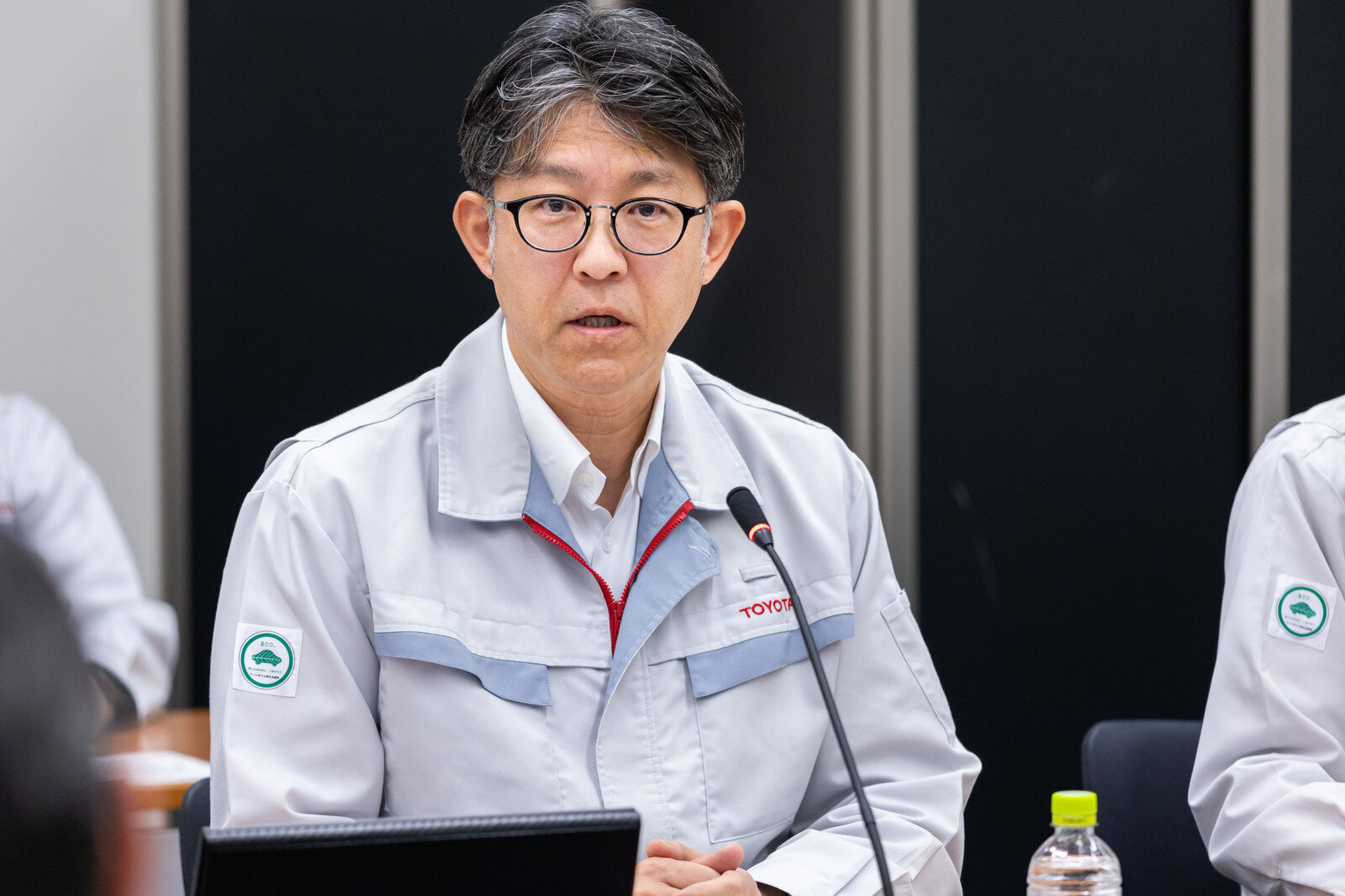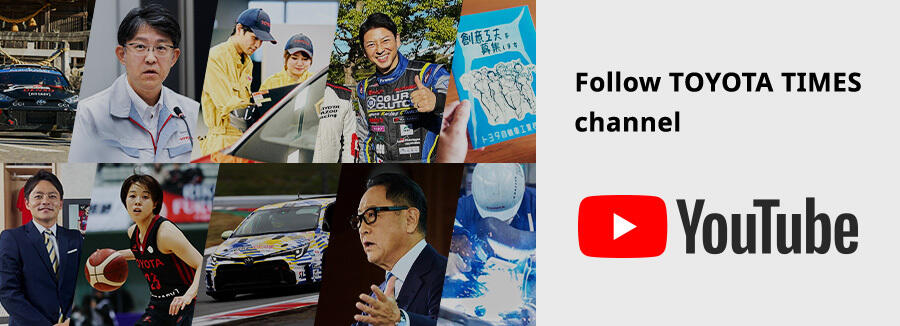
The second round of labor-management discussions--unusually held at the group level--focused on instilling a "sense of ownership." In an era of greater job choice, with work styles and personnel becoming ever more diverse, President Koji Sato spoke about the meaning of "uniformity."
Not playing games
President Sato

Looking back over these past three rounds of talks, I would like to reiterate that the unwavering core of Toyota’s labor-management sessions is discussion. Regardless of what’s being said in the outside world, the starting point for our labor-management discussions is the union’s demands, which provide the basis for candid dialogue between the two sides.
That is why we must never let these discussions become a game. We must continue these labor-management discussions without wavering from their core purpose, as upheld by Chairman Akio Toyoda throughout his presidency. I regard this as the most important driving force for creating the Toyota of tomorrow.
That said, we received a wide range of feedback from the second round of discussions, held within workplaces. Given the short amount of time, in some cases, it was difficult to consolidate opinions. Yet people told us they were glad to have the opportunity and were able to have candid discussions. I believe it was a positive experience.
At the same time, we need to recognize the fact that such comments arose when we considered what kind of platform these labor-management discussions ought to be: a way to engage with individual workplaces at the branch level, to improve what needs to be improved, and decide what needs to be decided.
From there, we can use these sessions to bring together matters that are best discussed collectively. This should be the right format. However, I think the big lesson is that we hadn’t been doing it this way.
In tackling workplace problems, change is only possible if the people who are closest to those concerns make decisions grounded in the genba.
General discussions will not change what happens around us on a day-to-day basis. I hope the union and management will once again recognize the importance of taking action to change our immediate surroundings, and work towards it.
Recently, Chairman Toyoda gave me this advice: “Consider the meaning of uniformity.”
As we’ve seen in today’s discussion, the environment in which we operate is becoming more diverse, but in order to manage a vast organization many things have been made uniform. I think Chairman Toyoda is calling on us to question the meaning of that uniformity.
Instead of setting up uniform systems and rules, our company should uniformly enable employees to find fulfillment in their work, according to the unique conditions of their workplace. What should be uniform across all workplaces is that they continue to raise productivity.
I think Chairman Toyoda is suggesting that we may be wrong in our perception of what should be made uniform.
I hope that individual groups and companies will translate the lessons of our second round of talks into action, pursuing efforts to boost motivation and productivity in a way that is not uniform, but tailored to the circumstances of each genba.
In the latter part of our discussions, we also heard about people undertaking efforts and challenges that cannot be adequately measured by conventional yardsticks.
This feedback really rang true for me. I realized that this situation requires us to make some major decisions, by which I mean that we need to re-examine the expanding scope of work for technical and operational staff who we heard from today, or to review our evaluation systems.
Let us pursue these efforts seriously with both labor and management. Since people have made the effort to speak up, we need to show results.
At the same time, I believe this requires a great deal of commitment. We can no longer fall back on the old excuse that “nothing can be done because of uniform rules and systems.”
It’s not possible to make an evaluation system that will satisfy everyone. But today you have proposed creating one that is more in line with our increasingly diverse environment.
On behalf of the company, I would like to respond by saying that we’re going to take this seriously. However, I would also like the union members to understand that this will require a tremendous commitment.
You have asked us to grapple with a very difficult problem, and we will do so earnestly. I hope that rather than relying on the executive team, everyone on the union side will also engage in these discussions as key stakeholders.
Similarly, let us also discuss what kind of environment we should create to ensure that mid-career hires or foreign recruits find their job accommodating and fulfilling.
When we talk about “what makes us Toyota” it is in a positive context, but I believe there are two sides to Toyota’s uniqueness—the good side that we ought to protect and nurture, and the aspects of our character that we need to fix.
At a recent meeting, I heard the phrase “external workforce,” referring to teams with personnel from both inside and outside the company, working together on the same project.
Is this a part of what makes us Toyota that we should be protecting? I think we need to have these kinds of discussions.
We reward effort and respect our different approaches to work. That’s how it should be. Let’s also change the way we evaluate personnel. There are people who work hard beyond the traditional confines of their jobs.
Meanwhile, there are those who do their best to save time and boost productivity within those same constraints, and they are working just as hard.
Are we properly recognizing each of these different efforts? I think that question was the crux of today’s discussion.
I feel positive and emboldened to continue discussing ways to shift away from uniformity. We are also serious about investing in strengthening our foundations and improving employee fulfillment. We do this for our future.
In order to make this possible, however, we also need to keep increasing our earning power. What we must pass on to future generations is not enormous fixed costs but earning power, the driving force that creates fulfilling work.
How do we raise productivity? We can’t make that investment without the two sides being prepared to work hard. I would like everyone from both the union and the company to understand this fundamental premise, and to engage in earnest discussions.
Discussions are important. Yet even more important is translating those discussions into action. Based on our vision of comprehensive investment in human resources, and a commitment to the requests that Chairman Kito made earlier, I would like to use the next session of our talks to respond to the demands made by the labor union.

